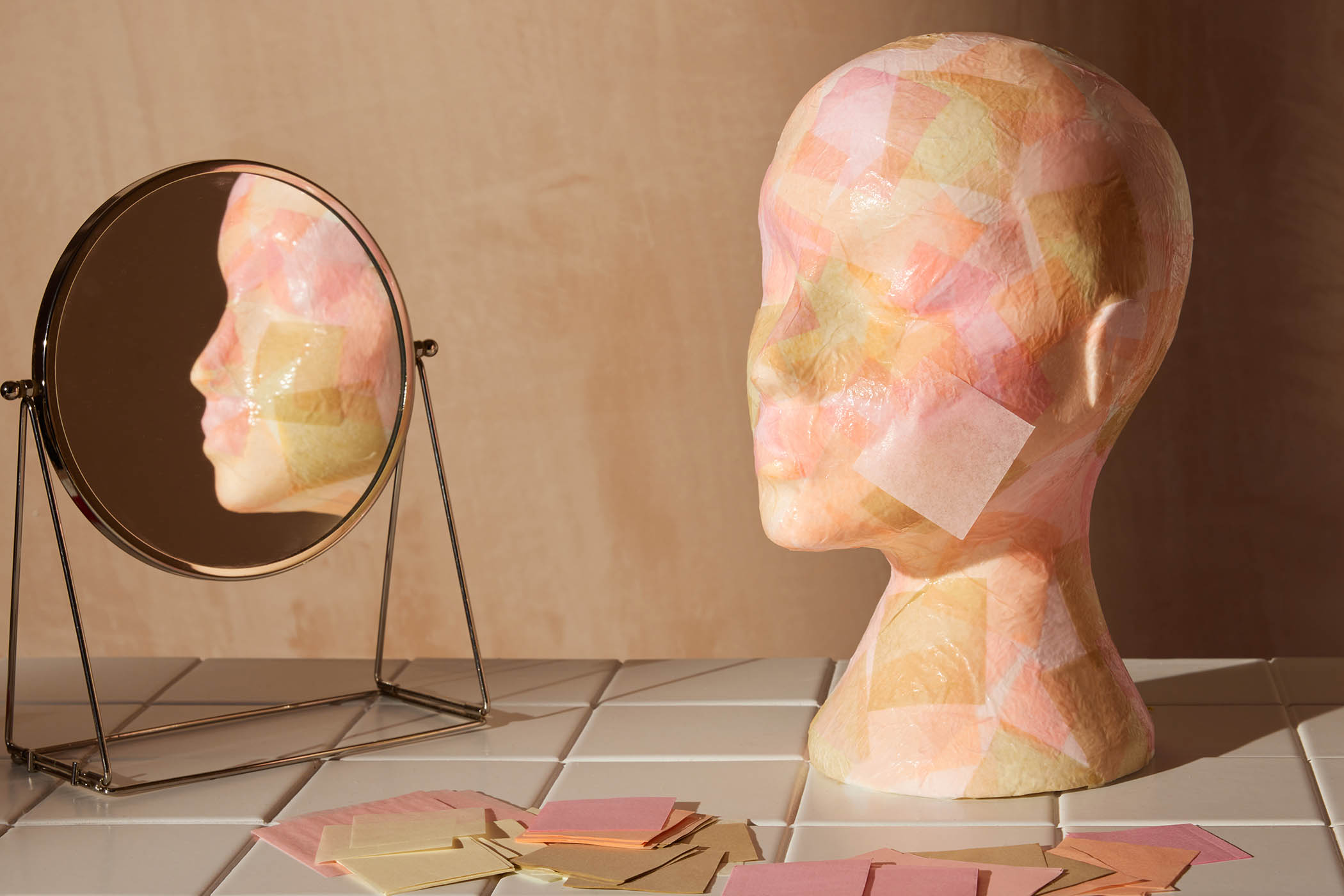
There seems to be an infinite range of red lipsticks. Is there any reason for another one?
Photograph by Annie Collinge
Red lipstick carries a lot on its retractable shoulders. Traced back to the 1930s, the lipstick effect is well documented: in times of economic recession people buy this small luxury as an avatar of normalcy. This is visible in today’s wildly unstable times, as all the major luxury fashion houses from Gucci to Hermès expand to lipstick lines.
Say you are right and there are no new shades of red: is there new technology? Brands advertise their developments in comfort and weightlessness, and my least favourite selling point: staying power (cornerstones in the empires of Huda and Kylie Jenner, but also, for my purposes, against the human spirit). It’s exciting to be alive because we are impermanent. If I wear red lipstick, it’s because I want to make clean and crisp the bedsheets of my face multiple times a day. Putting aside the meaning to the viewer and thinking only of the wearer, red lipstick evokes two key questions: “Will I leave a mark?” And “Can I have a fresh start?” On the latter, my most worn shades are Palazzo by Lisa Eldridge and Deep Talks by Kosas.
Say there are no new shades of red: is there new technology?
A lifetime ago I published a novel called Cherries in the Snow about a girl whose job is naming makeup. Cherries in the Snow is a Revlon red-lip classic of shade and poetry. The book was inspired by my mother’s time as a young New Yorker working for Revlon. She got a bonus when she thought up Flamingo which, as you can imagine, was a pink. I mention this because, if you really don’t want to feel like you’re being corralled by a consumerist machine, try employing a highly pigmented dark pink.
Related articles:
If the visual purpose is to create a high contrast and wake up your face, Fever Dream by Pat McGrath is a pink that feels like a red because it’s so saturated. If money were no object, I’d also suggest Street Pink by Dries Van Noten or Rose Athenais by Celine (with their work-of-art cases, you give this as someone’s entire birthday gift). But before splashing out, you might try Crest Whitestrips (have someone pick them up from Australia or the US where the peroxide level is higher) and check if your existing shades play differently once your teeth are brighter.
Approached through a spiritual lens, which for women and queer people makeup is, it’s human nature to keep buying red lipstick every season; the most talismanic of cosmetics, both armour and enticement. To not partake in the eternal quest because the colours already exist is too close to deciding your life isn’t going to get better after a certain age.
I’ll keep buying shades of red, though I have my Eldridge and Kosas, not because I’m a mad consumerist (though let me stress, I’m that, too), but because I’m essentially optimistic that there is more to come for me.
If women and queer people have to work hardest to leave our mark, red is an encouraging place to start.
On my radar… Favourite little ways to look and feel better
Body boosters Ordered online from Victoria Health, this is their reasonably priced and very effective own-brand line of supplements. I take the Collagen Tripeptide Complex for skin, hair, nails and joints (I also suspect it might even be helping to diminish the appearance of cellulite) and then the Magnesium Complex at night so I can sleep through to dawn when I’m stressed and my brain won’t stop playing The Crystal Ship by the Doors for no good reason. DoSe by VH supplements, from £21, Victoria Health
Flower power If I want my hair off my face on a hot day (or I need to wash it and don’t have the three decades it takes to shampoo and condition long, curly hair), I feel less of a hellpig wearing a banana clip than a hairband. These ones are by far the prettiest I’ve found. Triple Flower Clip (in Summer Cherry), £18, Loxx Hair Inc
The other cheek This beautiful blush formula is a way more effective summer face wake-up than bronzer and gets me that Raquel Welch cheek flush. I’d say it was apricot or peach, but I’ll accept ‘melon’ because I love it so much. Tea to Tan powder blush in Melon Melody, £45, By Terry
Editor’s note: our recommendations are chosen independently by our journalists. The Observer may earn a small commission if a reader clicks a link and purchases a recommended product. This revenue helps support Observer journalism.



